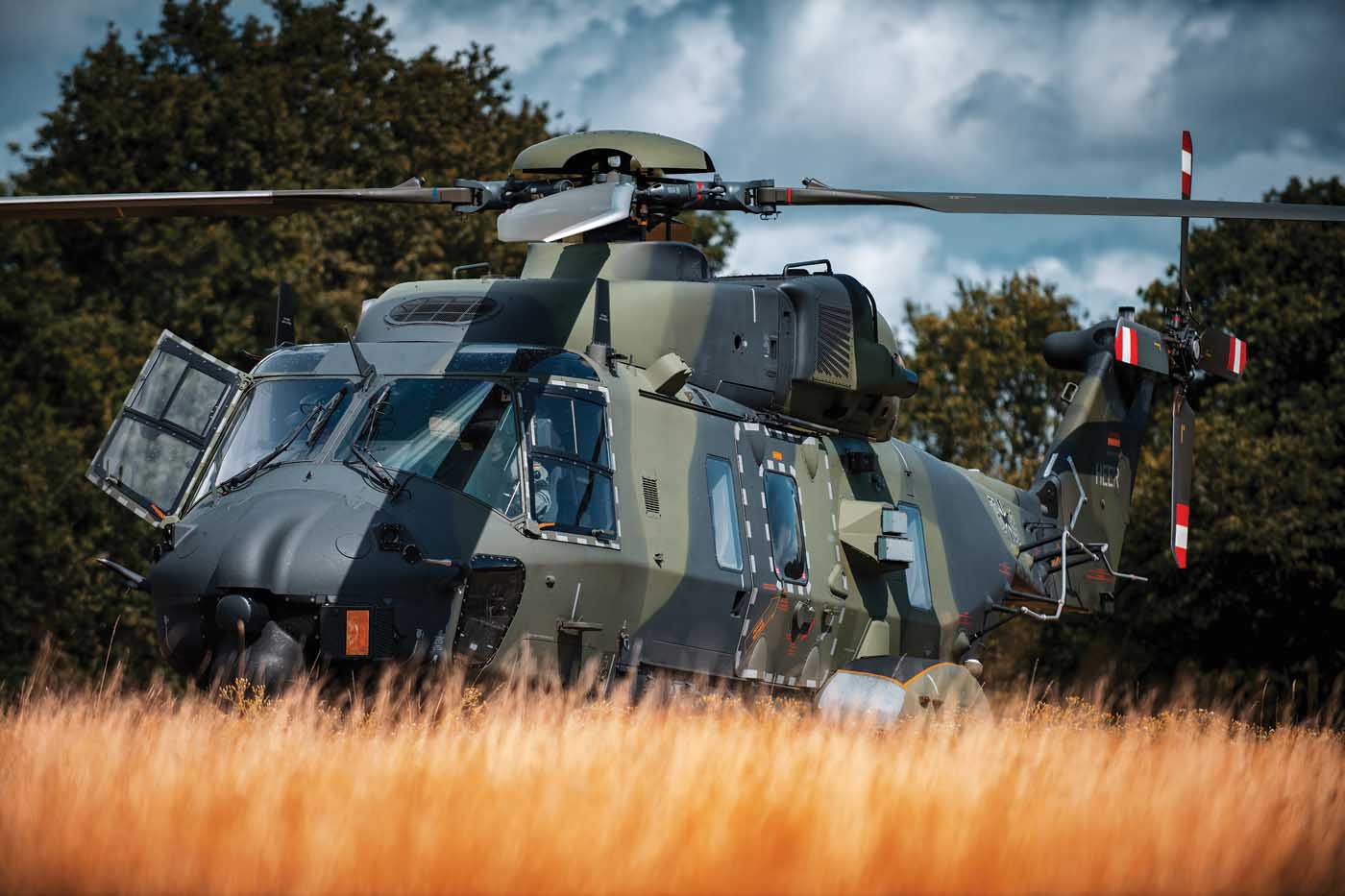With the fall of the Berlin Wall starting in 1989, Germany found itself preoccupied with reconciliation and reunification. Defense equipment programs the world over suddenly attracted scrutiny and criticism in equal measure as the “end of history” seemed to render them obsolete overnight. Without a unifying threat, pan-European equipment programs languished.
In 2002, however, German support to the North Atlantic Treaty Organization (NATO) mission in Afghanistan changed the nation’s long-held stance on deploying combat troops overseas. It was the first time that they and their equipment had seen combat — and the NHIndustries NH90 would play a central role.
Born in the eye of the storm
In the 1980s, several European nations began collaborative military projects in an effort to make use of the economy of scale. France, (then West) Germany, Italy, and the Netherlands began developing a helicopter specifically to meet a NATO requirement for both battlefield support and maritime roles. NHIndustries was established as the aircraft manufacturer, wholly owned by companies that are now known as Airbus Helicopters, Leonardo Helicopters, and Fokker Aerostructures.
By the ’90s, the Cold War was over. The glass cockpit revolution was well underway and automation of helicopter cockpits was advancing. What aircraft manufacturers lost in scale of orders they made up for in complexity, as European militaries in particular sought helicopters that could integrate into civilian airspace, regulations, and processes.
In 1995, NHIndustries flew its NH90 prototype — the quadrilateral consortium’s effort to meet the requirement that had been decided a decade prior. It was incredibly ambitious. The aircraft was designed to be exclusively fly-by-wire, with no mechanical control linkages between the pilot and the rotors — something never before attempted in a production helicopter. (It was not until 2004 that the third prototype had its manual backup controls removed.) The world had changed and with NATO now embroiled in Afghanistan, so had the sense of urgency. In 2006 the Bundeswehr (Germany’s collective armed forces) finally took delivery of the first NH90 Tactical Transport Helicopter (TTH) variant.
Capt Bastian W. (who requested that his surname be truncated for security reasons) has been an NH90 pilot with the unit since 2014. His main role includes tactics and mission preparation, a job hugely facilitated by the aircraft’s digital infrastructure. “We don’t really do anything on paper anymore,” he said. “We do all our planning on a digital system, so if I have five aircraft, I write one mission onto five DIDs [direct input devices], and all the pilots have the same information. For a simple training mission, planning [on this system] just takes 10 minutes, but for a large exercise I can have various overlays; multiple aircraft, jets, and other units.”
Systems such as this are vital for improving crew situational awareness about friendly forces, threat units, and navigating using GPS. They are also critical to modern warfighting tactics that depend on high-speed data transmission for battlespace managers to stay abreast of the rapidly changing situation.

In the NH90, the integration of digital systems has gone beyond both the mission system and the avionics — and into the flight controls themselves.
“Every system is redundant,” Bastian said. “If you have a degraded system you can normally continue, and for the flight controls there is a four-by-four active/active concept.” This quadruple redundancy not only provides resilience against electronic failures in the traditional sense, but can actually be more survivable to battle damage, as it is easier to distribute critical components around the aircraft than it is with a mechanical system.
The NH90 replaced the Bell UH-1D in service — the German, license-built version of the legendary “Huey.” It is a very different aircraft in size, weight, and complexity. The 10.6-tonne (23,400-pound) NH90 is capable of lifting the three-tonne (6,600-lb.) UH-1 as an external load. The Huey was revered as a warhorse, capable of shrugging off all but the worst battle damage. The NH90 is designed to survive an entirely different battlefield, using electronic warfare systems to protect against anything that can see in the dark, and flying at night to conceal against threats that cannot.
“We have an obstacle warning system which can warn us of wires, poles, and even trees,” explained Bastian. And if they do stray too close to the enemy, defensive armaments include either an FN Herstal M3M .50-caliber machine gun or the 7.62mm Rheinmetall MG 3. The TTH variant of the NH90 has the capacity for 16 troop seats and enough fuel for around three hours and 30 minutes of endurance at normal operating weights.

Unsurprisingly for a fly-by-wire aircraft, a four-axis autopilot is provided and communication, navigation, and mission system suites are fully integrated. Information is presented to the two pilots on five flat-panel displays, and the Thales TopOwl Helmet Mounted Sight Display (HMSD) is also integrated. “I have all the important information on the HMSD, so I fly mostly only using that,” said Bastian.
All this technology comes at a cost. While it allows the flexibility to upgrade the fleet incrementally during its period in service, these upgrades take time. There is now a mixed fleet of aircraft in service, many at the older Initial Operational Capability (IOC) level, some at Full Operational Capability (FOC) and a few at the most recent Maintenance Release (MR) 1. Bastian explained that 28 of the 32 aircraft scheduled for his unit have been delivered, but approximately half are still undergoing inspections or upgrades by Airbus Helicopters Germany at its Donauwörth facility. Airbus Helicopters also supports the aircraft at a unit level, with inspectors working alongside military technicians.
Early adopters
Bastian’s regiment, Transporthubschrauber (Light Transport Helicopter) Regiment 10, was the first unit to receive the NH90. The regiment has two flying squadrons and one squadron that acts as a headquarters. Three more are dedicated to maintenance, with each one responsible for inspections, routine maintenance, and rectification work. Collectively, they carry the nickname “Lüneburger Heide” after the vast heathland in lower Saxony, in Northern Germany, that sits between the cities of Hamburg, Bremen, and Hannover. Founded nearby at Celle in 1971, they have been based at Fassberg Air Base since 1981, but the heath is their stalking ground as it is also home to one of the largest military training areas in Europe.

This location gives the regiment not only easy access to excellent training locations for everything from tactical flying to live weapon-firing, but also provides opportunities to train with the various multi-national forces that make use of the training ground that covers over 70,000 acres (28,300 hectares).
“We have a lot of international guests here,” Bastian explained. “The Netherlands are often here, as are the British. The Americans had a big exercise here with over 5,000 soldiers.” One of the most impressive facilities is located in the town of Schnöggersburg, built specifically for military training. “They have around 500 houses, hotels, an underground rail network, a power station… it is really awesome,” said Bastian.
Naturally, the units that Regiment 10 train with most are German. Fallschirmjägerregiment (Airborne Regiment) 31 is based only 25 minutes of flying time away at Seedorf.
“One of our biggest partners here is the 31st Airborne Regiment. We have a low-level route to their landing field, and we often train with them for external cargo [operations] or parachuting,” said Bastian.
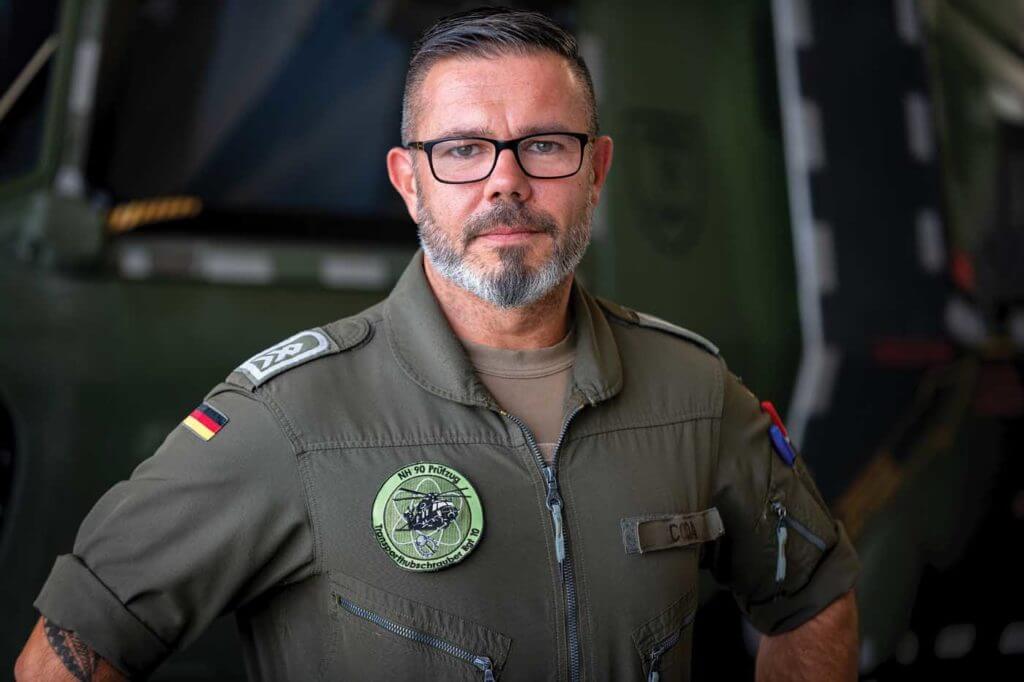
This close relationship with ground units is invaluable when deployed, particularly when they are relied upon as force protection for medical evacuation missions, which require the troops to be at constant readiness to operate in close cooperation with helicopter crews without an opportunity to rehearse specific drills.
Turning up the heat
The NH90s of Transporthubschrauber Regiment 10 were called upon to provide medevac force protection capabilities in Afghanistan in 2013, where the aircraft spent 18 months and proved capable of operating well outside their normal operating environment.
“We had 100 percent mission effectiveness,” Bastian said. “We had no technical malfunctions that meant we had to abort the mission.” This was the first time the NH90 had been deployed overseas, and it proved a vital learning experience for the crews — particularly in the intense darkness of the desert nights without the cultural lighting that would have been ever-present during their training in Germany.
“At night the light levels were often so poor that even with NVGs [night vision goggles], visibility was not enough,” said Bastian. Crews made use of the ability to project the forward looking infra-red (FLIR) image into the HMSD, and slave the camera direction to the helmet position. This presents the pilot with an infra-red image overlay of the world that does not depend on ambient light, resulting in better visibility and much safer operations.
This success was followed by another deployment to Gao, Mali, in support of the United Nations Multidimensional Integrated Stabilization Mission in Mali (MINUSMA), where the crews applied the lessons learned from their experiences in Afghanistan. “The first thing I did was get sandbags to protect our accommodation from insects,” Bastian recalled. “Three thousand sandbags, and I’m not finished yet.”
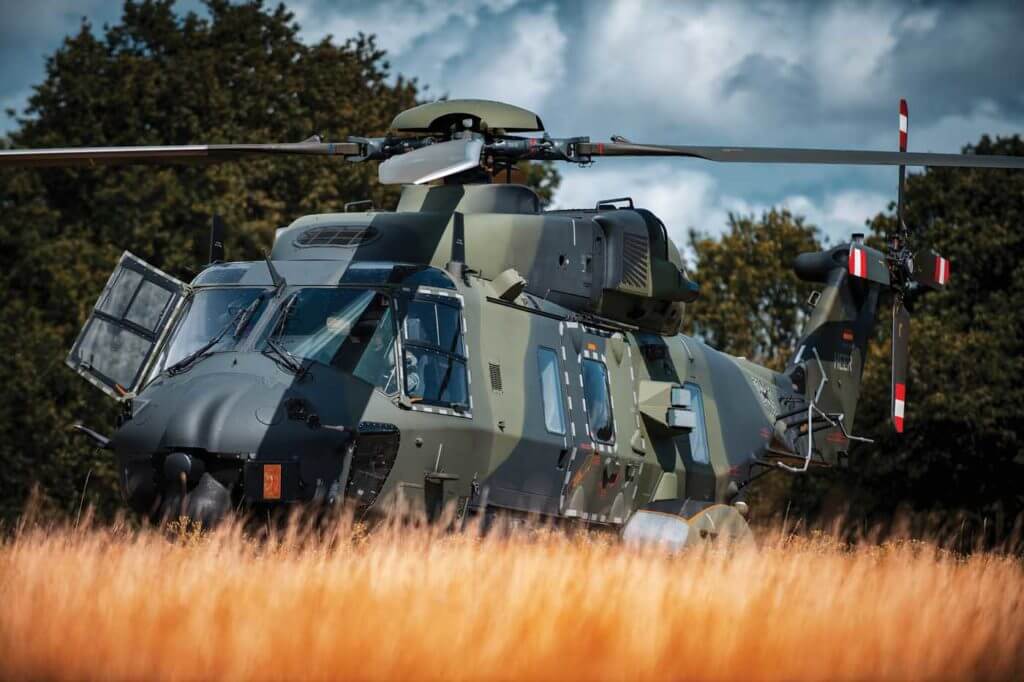
Insects weren’t the only concern. Once the crews began flying, they soon realized that discriminating between friend and foe was nearly impossible given the range of Islamist fighters and other factions, some of whom were loyal to — or even integrated within — government forces. All were similarly clothed and armed.
“Standard operating procedure is to spend no more than five minutes on the ground,” explained Bastian. “This gives time for the casualty to be packaged and loaded into the helicopter.”
In one particular casualty evacuation mission, the medevac spent 25 minutes simply sorting out who the casualties were, as the NH90 only has space allocated for two critical and two urgent casualties. “On this mission they transported eight,” he said, “but there were a lot of people around the helicopter and nobody knew exactly if they were friendly or hostile. They were so close to the aircraft that the pilot in the supporting helicopter circling around couldn’t have engaged them without hitting the medevac aircraft.”
There were lessons for the ground crews, too. MSgt Maurizio Coda began his career servicing Leopard tanks before qualifying as an avionics technician on the UH-1D, and finally transferring to the NH90. “It was easier to understand how the Huey worked,” he said. “In the NH-90 you have a lot of black boxes, and you don’t know what’s going on inside the black box.” These black boxes are line replaceable units (LRUs), designed to be swapped out with a spare when one stops working. This allows the aircraft to quickly be airborne again, but only when spare LRUs are available.

The ground crews were surprised at how well the high-tech NH90 performed in the desert, but there were some issues. “In Afghanistan the main problem was that the aircraft were in cold tents, and we had a lot of problems with the electronics because of the constant change in temperature as we moved them from the cold tents to the hot environment,” said Coda, adding that the resulting condensate became a problem in an unusual way: “The water mixed with the dust and it became like concrete.”
In Mali the aircraft were kept in tents at ambient temperature, but environmental dust entering the LRUs was causing them to overheat. With limited spares and critical missions hanging in the balance, crews were compelled to open the LRUs to clean them out.
Meanwhile, the dust was attacking the rest of the aircraft. “You could see that the dust was affecting the main rotor blades,” Coda said. “One of our guys had an idea to laminate them with a type of tape.” While similar techniques are common in other aircraft types, this had not yet been attempted with the NH90. Erosion had damaged 78 blades within four months, much faster than they could be repaired. After the tape was applied, the problem was largely eradicated.
Looking forward
The Afghanistan and Mali deployments proved beyond doubt that a technically complex aircraft could be operated in a hostile environment, but keeping them airworthy demanded a different mindset and experienced people. It is this area in particular that the German armed forces are feeling pressure; training personnel for such an advanced helicopter is time-consuming.
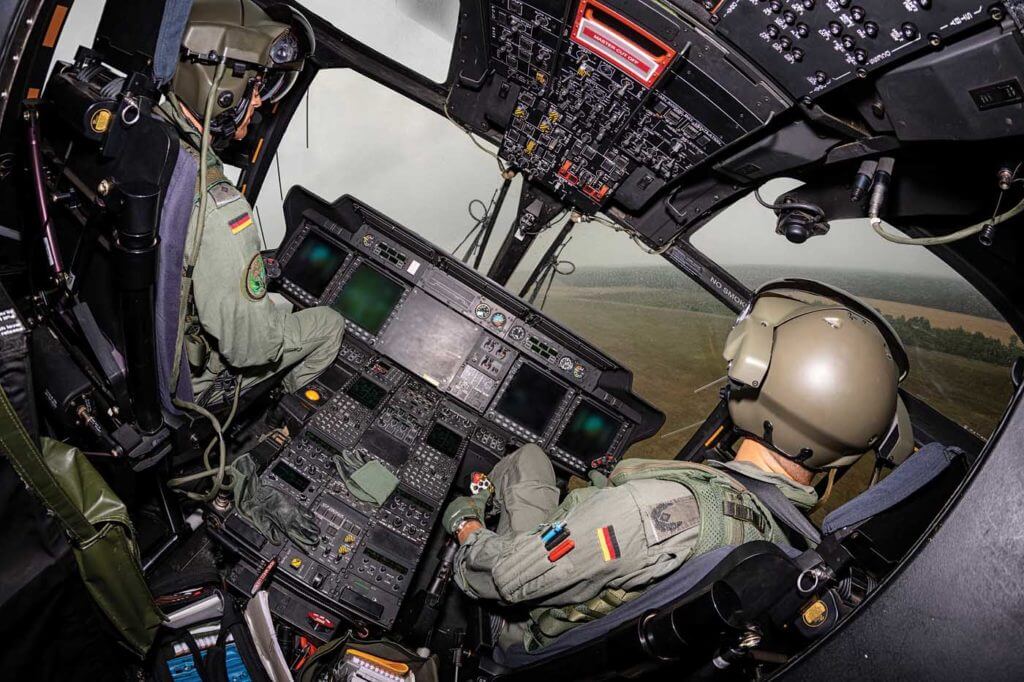
“The whole training course for new technicians is two-and-a-half years,” said Coda. “And by 2023 we must be compliant with civilian regulations, which will take even more training.”
The NH90 also has a complex maintenance schedule. “The aircraft requires a lot more work than the Huey,” explained Coda. “We have two inspection systems, one based on flight hours and [the] other on the calendar.”
Most of the inspections are done at the unit, but some are carried out under contract at Donauwörth. Up to three aircraft can undergo a 600-hour service at once, but this procedure takes a staggering 18 months in which the aircraft is completely stripped and rebuilt. “Often there is still sand inside [the aircraft] from Mali,” said Coda.
The situation is no easier for aircrew, Bastian told Vertical 911. “The German army is suffering with a lack of pilots,” he said. Ab-initio pilot training takes three to five years, and is followed by NH90 conversion training in Le Luc, France. Combat-ready work-up can take up to an additional three years. “If you start flying training at 22, you will be in your early 30s by the time you are ready for combat missions,” explained Bastian. “Out of 29 combat pilots on this unit, the average age is 41.”
Making it work
The crews at Fassberg were more than prepared to admit that despite their skepticism, the NH90 had performed well on its first two deployments. This is no small feat for a unit that previously operated the Huey — a famously rugged design — particularly given that the environment pushed both man and machine to their limits. The technology on the aircraft is impressive, from the fly-by-wire flight controls to the HMDS. Incremental upgrades will continue to provide capabilities that would be unthinkable in a Huey, albeit along timelines that would be equally alien.
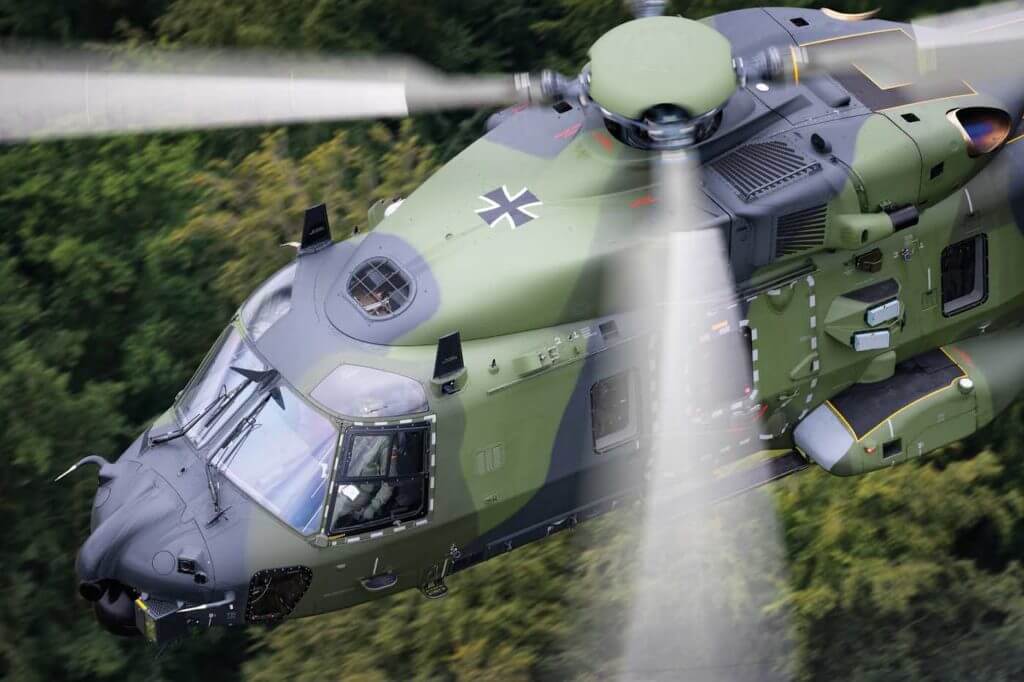
Few would call the NH90 rugged. Detractors point to the 18-month maintenance periods and wonder about battlefield survivability, but being able to patch up bullet holes is a moot point when the threat has moved from guns to guided missiles. In modernizing its helicopter fleet, the German army is committing to facing those threats, but that modernization has its roots in programs that are as much as three decades old.
Aircraft procured in the optimism of the 1990s had a far from painless inception as budgets shrank and demands inflated. The NH90 was no different. The more roles required of a helicopter in design, the more compromises are necessary — and great expectations were placed on the NH90. Its designers realized that doing more did not just mean flying more, but being able to fly in degraded visual environments, operate within civilian airspace to civilian rules, beat complex threats, and remain upgradable to meet future challenges.
The reality that the capability of the aircraft was not completely compromised is a near miracle, particularly given the technological leap into fully digital flight control. Despite all its shortcomings, the NH90 has been exported in both TTH and NATO Frigate Helicopter (NFH) variants to 10 nations, in addition to the original partners. Contracts were signed as recently as 2018.
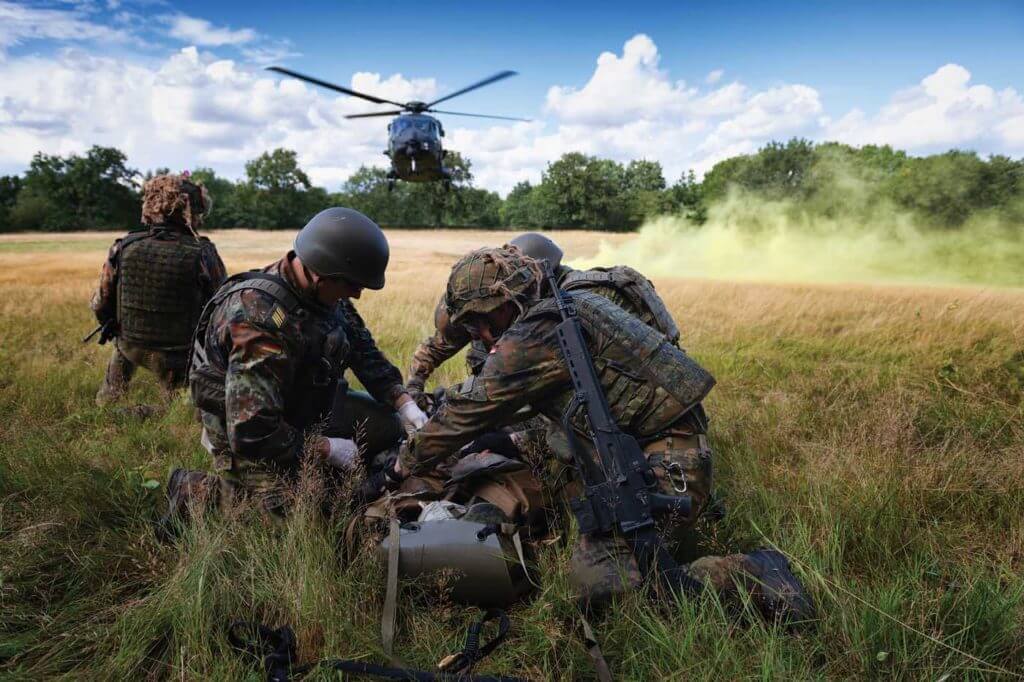
The NH90 has had its share of negative press. It would have been easy for its operators in Transporthubschrauber Regiment 10 to lose faith in an aircraft that they must have, at times, felt like they were beta-testing. Instead, they have adapted, exploited the technological advantage the aircraft offers, and forced it to work in challenging conditions. The export success must owe a lot to the efforts of the people who were given the NH90 to work with, and who made it work.





